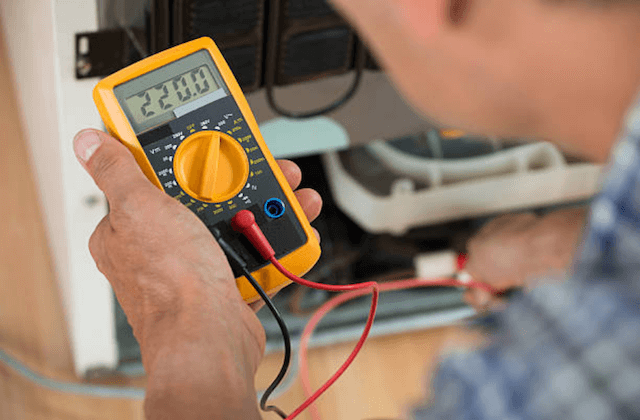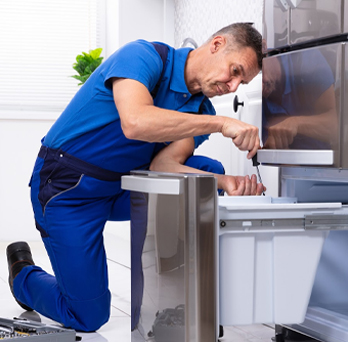The Ultimate Overview to Do It Yourself Device Fixing Strategies
From fridges to dish washers, recognizing just how to troubleshoot and fix these gadgets can conserve you time and cash. Are you prepared to find vital methods that will empower you to deal with repair services with confidence?
Understanding Common Appliance Problems
When you rely on your home appliances, it can be frustrating when they instantly quit functioning or act up. Understanding usual device problems can assist you repair issues efficiently.
If your stove isn't heating, defective aspects or thermostat concerns might be to condemn,. Dishwashing machines commonly experience problems with water drainage, so see to it the filter is clean and the drain tube isn't kinked.
Additionally, listen for uncommon noises; they often suggest mechanical issues. By acknowledging these signs, you can conserve time and potentially stay clear of costly fixings. A little understanding goes a long method in preserving your appliances, so remain notified to maintain everything running smoothly.
Crucial Devices for Do It Yourself Repair Works
Before diving into do it yourself appliance repairs, it is very important to gather the right devices to guarantee the process goes efficiently. Start with an excellent set of screwdrivers, consisting of both flathead and Phillips, as they're essential for opening up most devices. You'll additionally desire a set of pliers for grasping and turning cords or tiny parts.
Do not fail to remember a multimeter; it helps you test electrical parts and identify concerns efficiently. A socket set is helpful for loosening up or tightening bolts, while an energy knife can be valuable for opening up or cutting wires product packaging.
Lastly, consider having a flashlight accessible to illuminate dark areas inside your appliances. With these essential tools, you'll be fully equipped to take on different fixings, conserving both money and time. So, gather your gear and prepare to roll up your sleeves!
Security First: Preventative Measures to Take
Before you start any kind of home appliance repair work, it's vital to focus on safety. Make certain you wear individual protective tools, disconnect the source of power, and maintain your workplace organized. These simple safety measures can help prevent crashes and assure a smoother repair procedure.

Personal Safety Devices
Safety equipment is an essential component of any kind of Do it yourself device fixing project. Steel-toed boots are additionally a clever choice, especially when lifting heavy devices. Remember, being prepared with the ideal gear keeps you safe and focused on finishing your fixing successfully.
Power Source Disconnection
To guarantee a risk-free DIY appliance repair work, separating the source of power is crucial. Prior to you begin any type of job, you should unplug the home appliance or transform off the breaker. This easy action stops electric shocks and assurances that you can focus on the repair work without stressing over unintended activation. Constantly verify that the appliance is off by examining it with a voltage tester. If you're handling bigger devices, like a washer or clothes dryer, make certain to secure the power cord and stay clear of any type of contact with water. Remember, safety! When you're positive that the power is separated, you can confidently wage your fixings, understanding you have actually taken the required safety measures to safeguard on your own.
Workplace Organization
A well-organized job area can make all the distinction in your Do it yourself device repair work task. Start by clearing your workspace of mess to prevent disturbances and accidents. A tidy space not just increases effectiveness however likewise maintains you risk-free while you work on your home appliance fixing.
Step-by-Step Guide for Refrigerator Repairs
When your refrigerator begins acting up, it can be aggravating, yet dealing with the issue yourself can save you time and money. First, disconnect the refrigerator to guarantee security. Look for usual concerns like temperature variations or unusual sounds. Evaluate the thermostat setups; they could be established also high if it's not cooling. Next off, tidy the condenser coils, which usually gather dust and particles. For a loud refrigerator, examine the fan and verify it's not blocked.
If there's water pooling within, evaluate the door seals for damages or dust, and clean them if needed. As soon as you have actually attended to the problem, connect the refrigerator back in and monitor it for a couple of hours.
Repairing Washing Machine Problems
Just like refrigerators, cleaning makers can present their own set of challenges, yet lots of issues can be resolved with a bit of troubleshooting. If your equipment will not begin, check the power cable and verify it's plugged in.
If your clothing aren't obtaining tidy, think about the water level and cleaning agent type; utilizing way too much detergent can produce excess suds, influencing performance. For leaks, check out the hoses for splits or loose connections. Tightening up these can frequently resolve the issue. Regular upkeep, like cleansing the filter, can stop several problems from developing. Remember, a little troubleshooting goes a lengthy way in maintaining your cleaning machine running efficiently.
Fixing Ovens and Ranges
Just how can you fix usual problems with your stove or oven? Begin by inspecting the power supply.
If your oven isn't heating, examine the temperature level settings and verify the door seals snugly. A faulty burner might additionally be the perpetrator; you may need to replace it if it's harmed.
For unequal cooking, turn your pans and maytag washer repair service near me think about utilizing an oven thermometer to confirm precise temperature levels. Ultimately, if you listen to uncommon noises or scent gas, switch off the home appliance immediately and speak with a professional. By complying with these actions, you can identify and resolve many usual oven and range issues effectively.
Fixing Dishwashing Machines Made Easy
When your dishwashing machine begins breaking down, it can be discouraging, however dealing with usual issues isn't as hard as it seems. You'll find out step-by-step troubleshooting techniques that will certainly assist you determine the issue, together with the essential devices you'll require to deal with fixings yourself. Let's make fixing your dishwasher a breeze!
Typical Dishwasher Issues
While dish washers are created to make your life much easier, they can in some cases run into common issues that leave you really feeling irritated. If your dish washer's door will not lock, it can be a straightforward problem with the latch system or door seal. Addressing these problems early can conserve you time and hassle down the road.

Step-by-Step Troubleshooting
Prior to diving into repairs, it's crucial to identify the details problem your dish washer is dealing with. Beginning by inspecting if website here it's not cleansing correctly. Evaluate the spray arms for clogs and warranty they spin easily. Examine door seals and pipes for any damage if it's dripping. For strange sounds, pay attention carefully throughout cycles; foreign objects could be stuck in the filter or impeller. Examine the power supply and door latch if your dishwashing machine won't start. Do not forget to consult your customer guidebook for troubleshooting ideas specific to your design. By methodically dealing with each possible concern, you can pinpoint the issue and take the essential actions to fix it, making your dishwasher function like new once again.
Necessary Fixing Devices
Having the right tools at your disposal can make all the distinction when repairing your dishwasher. Don't neglect a bucket or towels for any type of water spills throughout repairs.
You could additionally want a level to assure your dishwasher's properly aligned. With these essential tools, you'll be fully equipped to tackle any kind of dish washer fixing challenge that comes your way.
Frequently Asked Concerns
If a Device Is Worth Repairing?, how Do I Determine.
To establish if an appliance's worth repairing, consider its age, repair service costs, and current worth. If repair services exceed half the substitute expense, you may wish to buy a new version rather.
Can I Discover Substitute Components Locally for My Home Appliance?
Yes, you can often discover replacement parts in your area for your home appliance. Check equipment stores, appliance service center, or regional classifieds. Do not neglect to read the full info here bring the version number to guarantee you obtain the right part!
What Common Mistakes Should I Stay Clear Of When Repairing Home Appliances?
When fixing home appliances, prevent hurrying through diagnostics, disregarding security precautions, or utilizing inaccurate devices. Don't miss reviewing handbooks or seeing tutorials; they supply necessary assistance. Be patient and extensive to ensure successful fixings and avoid more damage.
For how long Does a Common DIY Home Appliance Repair Service Take?
A normal DIY appliance repair generally takes one to 3 hours, depending on the complexity. You'll want to gather your tools and materials initially, and follow guidelines carefully to prevent unneeded delays.
Are There Any Kind Of Service Warranties for DIY Device Repair Works?
When you deal with do it yourself device repair work, warranties usually do not cover your job. However, some makers could honor service warranties for components you replace. Constantly examine your appliance's guarantee terms prior to beginning any repair services to stay clear of concerns.
Before diving into DIY home appliance fixings, it's important to gather the right tools to ensure the procedure goes efficiently.Prior to you begin any appliance repair work, it's crucial to prioritize safety.To ensure a risk-free Do it yourself home appliance repair service, separating the power resource is vital.An efficient job location can make all the distinction in your Do it yourself home appliance repair service task. Constantly check your home appliance's guarantee terms before starting any repair work to avoid issues.